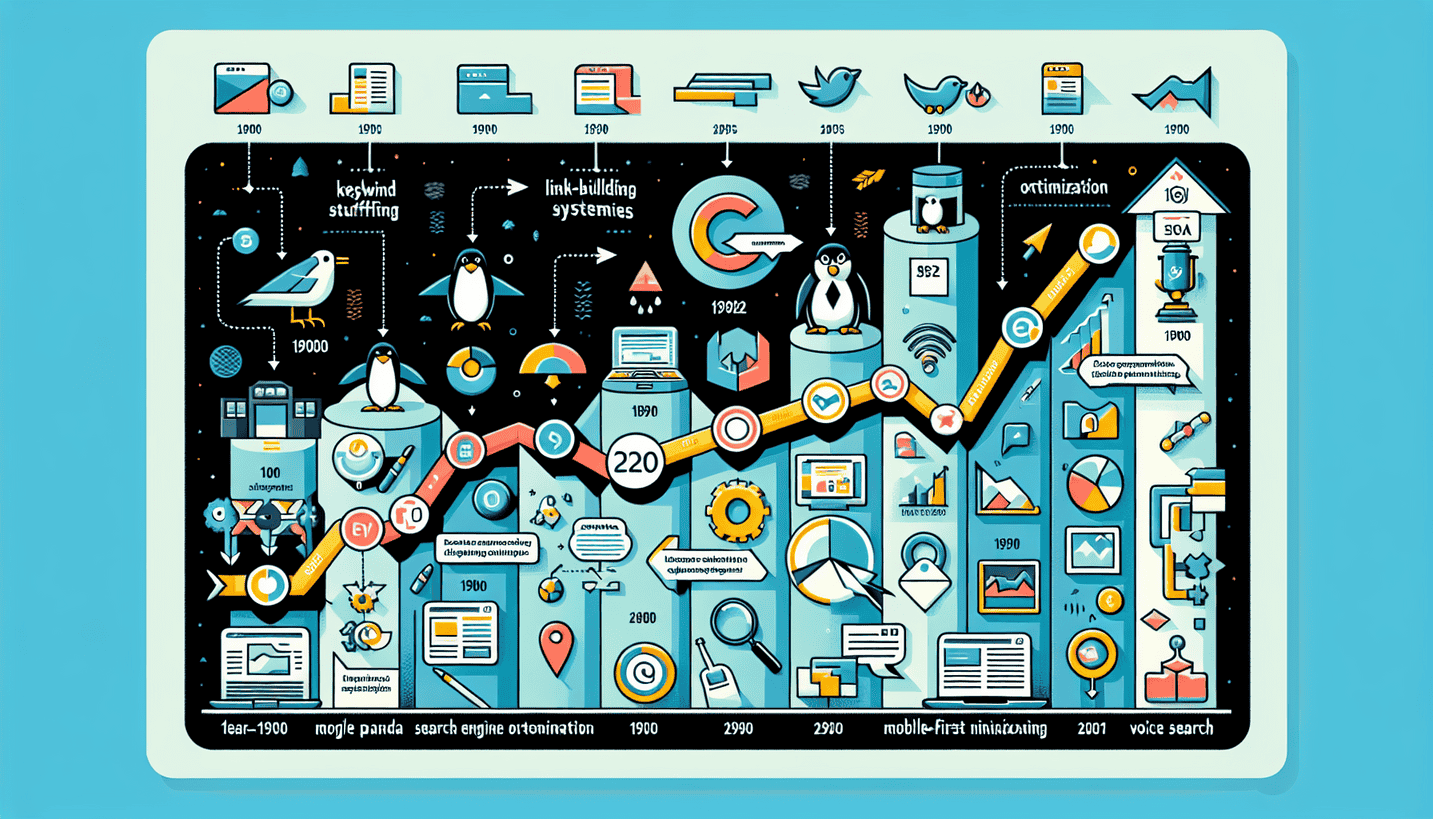Unlock 2025's SEO Secrets: Content That Dominates Search!


1. Introduction to the New Era of SEO Writing
Ah, the good old days of SEO writing! I often reminisce about a time when the trickiest part of content creation was mindlessly sprinkling the right keywords throughout your text. It was like artistic gymnastics for word nerds—racking up keywords for validation rather than crafting words that feel personal and relatable. Fast forward to today, and boy, have we come a long way!
As we step into 2025, SEO writing demands more than just keyword cramming; it requires a thoughtful approach that considers the reader and the search engine algorithms. The modern SEO writer needs to embrace a strategy that combines creativity, relevance, and authority. SEO must be intuitive, engaging, and most importantly, user-centered. It’s time to dive into this transformative landscape!

2. Understanding SEO Writing — What It Really Is
So, what exactly is SEO writing? In simple terms, it’s the art and science of crafting content that not only attracts search engine bots but also resonates with real human beings. The main goal? To create enriching content rich in value and utility—content that search engines recognize as worthy of a top spot on the Search Engine Results Pages (SERPs).
Here’s what constitutes stellar SEO writing:
- Relevance: It must answer the questions users are actually asking.
- Engagement: The content should captivate readers, making them want to stick around longer.
- Trust: Building authority through accurate information and reputable sources is paramount.
When executed effectively, high-quality SEO writing can boost your website’s visibility, turning it into a go-to resource for visitors and industry peers alike.

3. The SEO Landscape in 2025: Key Variables to Consider
Navigating the SEO landscape in 2025 is like learning to dance in a room full of partners—every algorithm change brings a new rhythm. With Google placing a higher emphasis on the quality of content rather than just the quantity, understanding the essential elements of search engine optimization is crucial.
Consider these critical variables:
- E-E-A-T Principles:
- Experience: This new aspect evaluates the author’s expertise. Content should come from those with firsthand experience.
- Expertise: The content must be grounded in reliable information to build trust with users.
- Authoritativeness: Site authority remains a crucial signal for Google and readers alike.
- Trustworthiness: Cultivating trust leads to engaged audiences and loyal visitors.
- User Experience: Metrics like dwell time and bounce rate now play a central role in SERP rankings.
- Backlinks: While backlinks are still essential, their quality trumps quantity. High-ranking, relevant backlinks signal reliability.
With these elements in mind, crafting impactful content becomes an exciting challenge worth diving into.

4. Mastering the Art of Search Intent
Understanding search intent is like having your finger on the pulse of your audience. It’s crucial to know what your users genuinely expect when they tap into a search engine. There are typically four categories of search intent:
- Informational: Users seek general information. Example: “What is SEO?”
- Navigational: The goal is to reach a specific site or page. Example: “Facebook login.”
- Transactional: Users are ready to purchase. Example: “Buy running shoes.”
- Commercial: Aiming to compare options before making a decision. Example: “Best SEO tools 2025.”
To truly understand intent, use tools like Google’s “People Also Ask” section or keyword tools that analyze user queries. Aligning your content structure with these insights will help meet and exceed user expectations.
5. Keyword Strategies for the Future
Keyword strategies have definitely evolved. In the past, it was all about stuffing a few target keywords into your content like packing a suitcase for a trip. However, in 2025, the focus has shifted to semantic search and user intent:
- Primary Keywords: The main focus of your content.
- Long-tail Keywords: More specific phrases that capture niche queries.
- Vertical Keywords: Industry-specific terms to broaden your audience reach.
- Niche Keywords: LSI (Latent Semantic Indexing) keywords add context.
- User-generated Keywords: Reflecting actual questions users ask can lead directly to higher user engagement.
Incorporating diverse keyword types not only helps in ranking but also in crafting comprehensive content that resonates. Additionally, tools like SEMrush and Ahrefs can simplify the research process.
6. Crafting Compelling Titles that Convert
Let’s be real for a second: Crafting great titles can make or break your content’s success. Think of titles as the shop window that entices potential customers. A captivating title can dramatically improve your click-through rates (CTR).
Here are a few strategies to remember when crafting titles:
- Emotional Appeal: Tap into feelings—curiosity, fear, joy.
- Formula Approach: Consider classics like “The Ultimate Guide to [Keyword]” or “10 Ways to [Action]”.
- Power Words: Use stimulating language that prompts action, e.g., “Uncover,” “Achieve,” “Transform.”
By focusing on user psychology and emotional triggers, you can create headlines that stand out.
7. Structuring Content for Maximum Impact
Effective content structure is paramount for both user experience and SEO. Here are some best practices to consider:
- Use Short Paragraphs: Aim for readability. Long blocks of text are intimidating!
- Bullet Points & Lists: They help readers digest information quickly.
- Visuals: Include images, videos, or infographics; they break the monotony and enhance understanding.
- Optimize for Featured Snippets: Craft precise answers to common questions.
By offering a clear structure, you invite users to engage with your content longer, thereby boosting your SEO performance.
8. The Power of Image Optimization in SEO
In a world where attention spans are short, visuals can elevate your content and keep users engaged. Here are some quick tips for optimizing images:
- Filename Optimization: Use descriptive file names that include keywords.
- Alt Text: Always include alt text for images, which helps with indexing.
- Appropriate Formats: Stick with formats like JPG and PNG for high-quality visuals without heavy loading times.
Not only do optimized images enhance user experience, but they also contribute to better search rankings.

9. The Importance of Regular Content Updates
Keeping your content fresh is essential in the fast-paced digital world. Regular updates signal to search engines that your content is relevant.
Here’s a quick checklist for updating your existing content:
- Target Keyword Check: Reassess your keyword relevance.
- Title Updates: Make your titles more compelling.
- Visuals Review: Replace outdated images or add new ones.
- Meta Tags: Optimize them for current trends.
- Internal Links: Add new internal links to bolster connections.
Refreshing content can breathe new life into old posts, securing more backlinks and improving your site’s authority.
10. Bringing It All Together: Tips for Success
So, how can you achieve SEO writing that not only pleases the algorithms but captivates the audience? Consider these essentials:
- Focus on search intent.
- Select the right keywords.
- Incorporate LSI keywords.
- Create attention-grabbing titles.
- Maintain a well-structured and user-friendly design.
- Optimize every piece of content, including images and URLs.
With continual learning and adaptation to emerging trends, you can ensure your content thrives in this dynamic environment.
11. Engage with Your Audience
Your experiences and insights on SEO writing can add valuable dimensions to this conversation! Share your thoughts and actionable practices that have worked for you, or explore more SEO resources to deepen your knowledge. The digital space is ever-evolving, and there’s always more to learn!
Now that you’re armed with the latest strategies in SEO writing for 2025, it’s time to take action, evolve your content practices, and watch your visibility skyrocket!